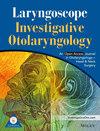Topical Anesthesia and Olfactory Capability: A Pilot Study
Abstract
Introduction
Topical anesthesia (TA) of the nasal fossa has been shown to be sufficient for patient comfort during nasal endoscopy. However, investigators need to know how soon after the administration of TA they can accurately evaluate olfactory capability. Thus, the main aim of this study was to assess, in healthy volunteers (HV), when the effects of TA wear off to accurately measure olfactory capability after its administration.
Methods
A prospective, single-center, pilot study was conducted to evaluate the duration of the effect of TA on olfactory capability, using the UPSIT. Thirty healthy volunteers were recruited and analyzed. Following baseline testing (UPSIT), TA was administered intranasally (lidocaine + oxymetazoline). Then, participants underwent three additional UPSIT evaluations at distinct time points: immediately post-application (T0), 10 min (T + 10), and 30 min post-application (T + 30). The primary outcome was the change in UPSIT score from baseline to each subsequent time point. Paired t-tests were applied to compare within-subject score differences across time points. Significance was defined as p < 0.05, and the R software was used.
Results
For the 30 HV included, the mean UPSIT at T0 was 32.8 ± 3.1. At T1, the mean UPSIT (29.6 ± 4.0) was significantly lower than at T0 (3.13 ± 3.7-point, p < 0.0001). At T2, the mean UPSIT was 31.7 ± 4.2, without any significant difference from T0 (−1.03 ± 3.5-point, p = 0.350). At T3, the mean UPSIT was 31.7 ± 3.1, without any significant difference compared to T0 (−1.07 ± 2.6-point, p = 0.067). Regarding subgroup analysis between healthy volunteers with or without ITH, their own perception of smell and UPSIT were significantly different.
Conclusion
Immediately after receiving 4 sprays per nostril, the mean UPSIT—with testing begun directly after the spray was administered—was significantly lower than baseline, dropping under the threshold for normal olfactory function. It was fully recovered by ten min.
Level of Evidence
3.


 求助内容:
求助内容: 应助结果提醒方式:
应助结果提醒方式:


